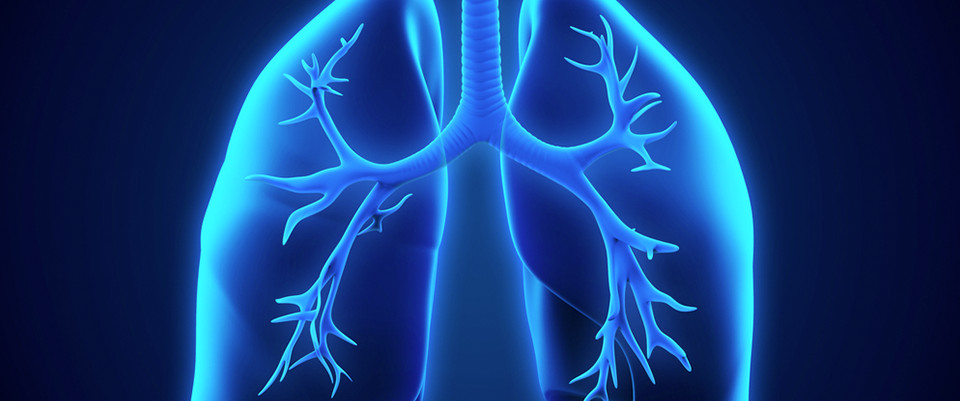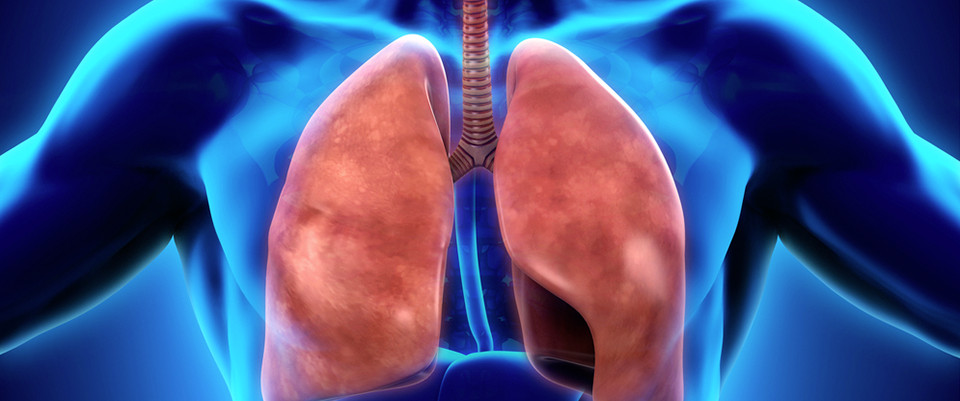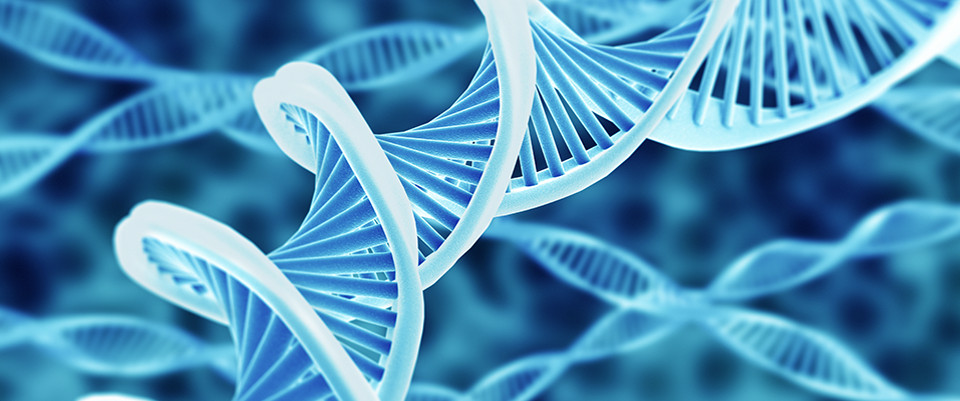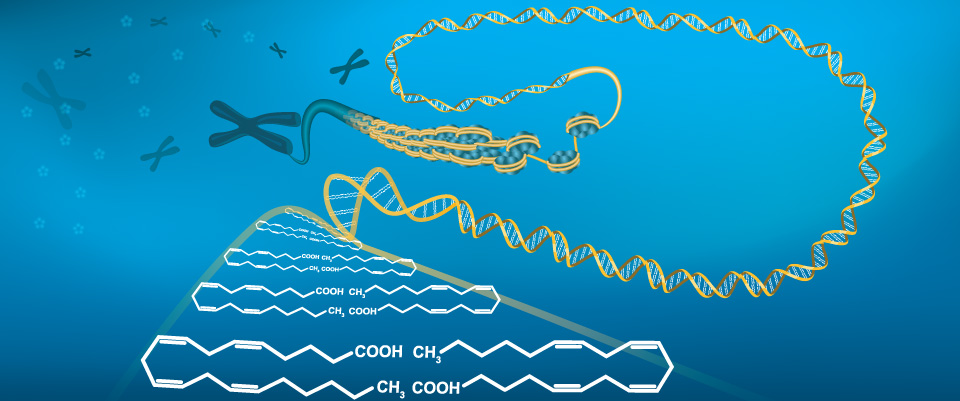PubMed
The biomarkers of fetal growth in intrauterine growth retardation and large for gestational age cases: from adipocytokines to a metabolomic all-in-one tool.
The biomarkers of fetal growth in intrauterine growth retardation and large for gestational age cases: from adipocytokines to a metabolomic all-in-one tool.
Expert Rev Proteomics. 2015 Apr 5;:1-8
Authors: Dessì A, Pravettoni C, Cesare Marincola F, Schirru A, Fanos V
Abstract
Adipose tissue is no longer considered as inert; the literature describes the role it plays in the production of many substances, such as adiponectin, visfatin, ghrelin, S100B, apelin, TNF, IL-6 and leptin. These molecules have specific roles in humans and their potential as biomarkers useful for identifying alterations related to intrauterine growth retardation and large for gestational age neonates is emerging. Infants born in such conditions have undergone metabolic changes, such as fetal hypo- or hyperinsulinemia, which may lead to development of dysmetabolic syndrome and other chronic diseases in adulthood. In this review, these biomarkers are analyzed specifically and it is discussed how metabolomics may be an advantageous tool for detection, discrimination and prediction of metabolic alterations and diseases. Thus, a holistic approach, such as metabolomics, could help the prevention and early diagnosis of metabolic syndrome.
PMID: 25843159 [PubMed - as supplied by publisher]
Identification of anti-HIV active dicaffeoylquinic - and tricaffeoylquinic acids in Helichrysum populifolium by NMR-based metabolomic guided fractionation.
Related Articles
Identification of anti-HIV active dicaffeoylquinic - and tricaffeoylquinic acids in Helichrysum populifolium by NMR-based metabolomic guided fractionation.
Fitoterapia. 2015 Apr 1;
Authors: Heyman HM, Senejoux F, Seibert I, Klimkait T, Maharaj VJ, Meyer JJ
Abstract
South Africa being home to more than 35% of the world's Helichrysum species (c.a. 244) of which many are used in traditional medicine, is seen potentially as a significant resource in the search of new anti-HIV chemical entities. It was established that five of the 30 Helichrysum species selected for this study had significant anti-HIV activity ranging between 12 - 21μg/mL (IC50) by using an in-house developed DeCIPhR method on a full virus model. Subsequent toxicity tests also revealed little or no toxicity for these active extracts. With the use of NMR-based metabolomics, the search for common chemical characteristics within the plant extract was conducted, which resulted in specific chemical shift areas identified that could be linked to the anti-HIV activity of the extracts. The NMR chemical shifts associated with the activity were identified to be 2.56 - 3.08ppm, 5.24 - 6.28ppm, 6.44 - 7.04ppm and 7.24 - 8.04ppm. This activity profile was then used to guide the fractionation process by narrowing down and focusing the fractionation and purification process to speed up the putative identification of five compounds with anti-HIV activity in the most active species, H. populifolium. The anti-HIV compounds identified for the first time from H. populifolium were three dicaffeoylquinic acid derivatives, i.e. 3,4-dicaffeoylquinic acid, 3,5-dicaffeoylquinic acid and 4,5-dicaffeoylquinic acid as well as two tricaffeoylquinic acid derivatives i.e. 1,3,5-tricaffeoylquinic acid and either 5-malonyl-1,3,4-tricaffeoylquinic or 3-malonyl-1,4,5-tricaffeoylquinic acid, with the latter being identified for the first time in the genus.
PMID: 25841639 [PubMed - as supplied by publisher]
The changing world of drug development.
Related Articles
The changing world of drug development.
Chin Clin Oncol. 2014 Jun;3(2):12
Authors: Dittrich C
Abstract
Cancer drug development is undergoing a substantial shift nowadays. The underlying drivers are multi-factorial. On the one side, drug development is performed more rationally than ever, profiting from the scientific advances in molecular biology in general and the elucidation of the various "omes" from genome to metabolome in particular. On the other side, it is based on enormous technological progress, e.g., in the field of genome sequencing, and in that of adequate handling of the resulting plethora of data. The high attrition rate of oncologic drugs under development in the past and the pressure from the side of the payers make it necessary to find permanently new answers for and adaptations of the process of drug development. In this context, it is necessary to respect arguments and views from the various perspectives of all the relevant stakeholders. Together with a group of international experts from different perspectives of drug development, this special issue will illustrate the respective role of patients, laboratory, clinical trials, drug companies, regulatory bodies, and also the economic principle in drug development, aiming at facilitating drug research in the near future.
PMID: 25841409 [PubMed - in process]
Plant metabolite profiles and the buffering capacities of ecosystems.
Related Articles
Plant metabolite profiles and the buffering capacities of ecosystems.
Phytochemistry. 2015 Feb;110:6-12
Authors: Fester T
Abstract
In spite of some inherent challenges, metabolite profiling is becoming increasingly popular under field conditions. It has been used successfully to address topics like species interactions, connections between growth and chemical stoichiometry or the plant's stress response. Stress exerts a particularly clear impact on plant metabolomes and has become a central topic in many metabolite profiling experiments in the fields. In contrast to phytochambers, however, external stress is often at least partially absorbed by the environment when measuring under field conditions. Such stress-buffering capacities of (agro)-ecosystems are of crucial interest given the ever-increasing anthropogenic impact on ecosystems and this review promotes the idea of using plant metabolite profiles for respective measurements. More specifically I propose to use parameters of the response of key plant species to a given stress treatment as proxies for measuring and comparing stress-buffering capacities of ecosystems. Stress response parameters accessible by metabolite profiling comprise for example the intensity or duration of the impact of stress or the ability of the plant organism to recover from this impact after a given time. Analyses of ecosystem stress-buffering capacities may improve our understanding of how ecosystems cope with stress and may improve our abilities to predict ecosystem changes.
PMID: 25564262 [PubMed - indexed for MEDLINE]
Metabolic profiling of Commiphora wightii (guggul) reveals a potential source for pharmaceuticals and nutraceuticals.
Related Articles
Metabolic profiling of Commiphora wightii (guggul) reveals a potential source for pharmaceuticals and nutraceuticals.
Phytochemistry. 2015 Feb;110:29-36
Authors: Bhatia A, Bharti SK, Tripathi T, Mishra A, Sidhu OP, Roy R, Nautiyal CS
Abstract
Guggul gum resin from Commiphora wightii (syn. Commiphoramukul) has been used for centuries in Ayurveda to treat a variety of ailments. The NMR and GC-MS based non-targeted metabolite profiling identified 118 chemically diverse metabolites including amino acids, fatty acids, organic acids, phenolic acids, pregnane-derivatives, steroids, sterols, sugars, sugar alcohol, terpenoids, and tocopherol from aqueous and non-aqueous extracts of leaves, stem, roots, latex and fruits of C. wightii. Out of 118, 51 structurally diverse aqueous metabolites were characterized by NMR spectroscopy. For the first time quinic acid and myo-inositol were identified as the major metabolites in C. wightii. Very high concentration of quinic acid was found in fruits (553.5 ± 39.38 mg g(-1) dry wt.) and leaves (212.9 ± 10.37 mg g(-1) dry wt.). Similarly, high concentration of myo-inositol (168.8 ± 13.84 mg g(-1) dry wt.) was observed from fruits. The other metabolites of cosmeceutical, medicinal, nutraceutical and industrial significance such as α-tocopherol, n-methylpyrrolidone (NMP), trans-farnesol, prostaglandin F2, protocatechuic, gallic and cinnamic acids were identified from non-aqueous extracts using GC-MS. These important metabolites have thus far not been reported from this plant. Isolation of a fungal endophyte, (Nigrospora sps.) from this plant is the first report. The fungal endophyte produced a substantial quantity of bostrycin and deoxybostrycin known for their antitumor properties. Very high concentrations of quinic acid and myo-inositol in leaves and fruits; a substantial quantity of α-tocopherol and NMP in leaves, trans-farnesol in fruits, bostrycin and deoxybostrycin from its endophyte makes the taxa distinct, since these metabolites with medicinal properties find immense applications as dietary supplements and nutraceuticals.
PMID: 25561401 [PubMed - indexed for MEDLINE]
Pyruvate kinase isoform expression alters nucleotide synthesis to impact cell proliferation.
Related Articles
Pyruvate kinase isoform expression alters nucleotide synthesis to impact cell proliferation.
Mol Cell. 2015 Jan 8;57(1):95-107
Authors: Lunt SY, Muralidhar V, Hosios AM, Israelsen WJ, Gui DY, Newhouse L, Ogrodzinski M, Hecht V, Xu K, Acevedo PN, Hollern DP, Bellinger G, Dayton TL, Christen S, Elia I, Dinh AT, Stephanopoulos G, Manalis SR, Yaffe MB, Andrechek ER, Fendt SM, Vander Heiden MG
Abstract
Metabolic regulation influences cell proliferation. The influence of pyruvate kinase isoforms on tumor cells has been extensively studied, but whether PKM2 is required for normal cell proliferation is unknown. We examine how PKM2 deletion affects proliferation and metabolism in nontransformed, nonimmortalized PKM2-expressing primary cells. We find that deletion of PKM2 in primary cells results in PKM1 expression and proliferation arrest. PKM1 expression, rather than PKM2 loss, is responsible for this effect, and proliferation arrest cannot be explained by cell differentiation, senescence, death, changes in gene expression, or prevention of cell growth. Instead, PKM1 expression impairs nucleotide production and the ability to synthesize DNA and progress through the cell cycle. Nucleotide biosynthesis is limiting, as proliferation arrest is characterized by severe thymidine depletion, and supplying exogenous thymine rescues both nucleotide levels and cell proliferation. Thus, PKM1 expression promotes a metabolic state that is unable to support DNA synthesis.
PMID: 25482511 [PubMed - indexed for MEDLINE]
Comprehensive analysis of lipid composition in crude palm oil using multiple lipidomic approaches.
Related Articles
Comprehensive analysis of lipid composition in crude palm oil using multiple lipidomic approaches.
J Genet Genomics. 2014 May 20;41(5):293-304
Authors: Cheong WF, Wenk MR, Shui G
Abstract
Palm oil is currently the leading edible oil consumed worldwide. Triacylglycerol (TAG) and diacylglycerol (DAG) are the dominant lipid classes in palm oil. Other lipid classes present in crude palm oil, such as phospholipids and galactolipids, are very low in abundance. These low-abundance lipids constitute key intermediates in lipid biosynthesis. In this study, we applied multiple lipidomic approaches, including high-sensitivity and high-specificity multiple reaction monitoring, to comprehensively quantify individual lipid species in crude palm oil. We also established a new liquid chromatography-coupled mass spectrometry method that allows direct quantification of low-abundance galactolipids in palm oil without the need for sample pretreatment. As crude palm oil contains large amounts of neutral lipids, our direct-detection method circumvents many of the challenges encountered with conventional lipid quantification methods. This approach allows direct measurement of lipids with no hassle during sample preparation and is more accurate and precise compared with other methods.
PMID: 24894356 [PubMed - indexed for MEDLINE]
A lipidomic perspective on intermediates in cholesterol synthesis as indicators of disease status.
Related Articles
A lipidomic perspective on intermediates in cholesterol synthesis as indicators of disease status.
J Genet Genomics. 2014 May 20;41(5):275-82
Authors: Sharpe LJ, Burns V, Brown AJ
Abstract
Lipidomics is increasingly becoming a viable method for researchers to routinely identify the various sterols present in samples, beyond just measuring cholesterol itself. In particular, the measurement of intermediates in cholesterol synthesis can shed new insights into not only the flux through the pathway, but also numerous disease states where levels of sterol intermediates are drastically altered. In this review, we indicate several intermediates that are relevant to disease, and discuss the challenges for analysing them, including the need for standardised methodology or universal controls across the lipidomics field.
PMID: 24894354 [PubMed - indexed for MEDLINE]
Cordyceps sinensis protects against liver and heart injuries in a rat model of chronic kidney disease: a metabolomic analysis.
Related Articles
Cordyceps sinensis protects against liver and heart injuries in a rat model of chronic kidney disease: a metabolomic analysis.
Acta Pharmacol Sin. 2014 May;35(5):697-706
Authors: Liu X, Zhong F, Tang XL, Lian FL, Zhou Q, Guo SM, Liu JF, Sun P, Hao X, Lu Y, Wang WM, Chen N, Zhang NX
Abstract
AIM: To test the hypothesis that the traditional Chinese medicine Cordyceps sinensis could improve the metabolic function of extrarenal organs to achieve its anti-chronic kidney disease (CKD) effects.
METHODS: Male SD rats were divided into CKD rats (with 5/6-nephrectomy), CKD rats treated with Cordyceps sinensis (4 mg•kg-1•d-1, po), and sham-operated rats. After an 8-week treatment, metabolites were extracted from the hearts and livers of the rats, and then subjected to (1)H-NMR-based metabolomic analysis.
RESULTS: Oxidative stress, energy metabolism, amino acid and protein metabolism and choline metabolism were considered as links between CKD and extrarenal organ dysfunction. Within the experimental period of 8 weeks, the metabolic disorders in the liver were more pronounced than in the heart, suggesting that CKD-related extrarenal organ dysfunctions occurred sequentially rather than simultaneously. Oral administration of Cordyceps sinensis exerted statistically significant rescue effects on the liver and heart by reversely regulating levels of those metabolites that are typically perturbed in CKD.
CONCLUSION: Oral administration of Cordyceps sinensis significantly attenuates the liver and heart injuries in CKD rats. The (1)H NMR-based metabolomic approach has provided a systematic view for understanding of CKD and the drug treatment, which can also be used to elucidate the mechanisms of action of other traditional Chinese medicines.
PMID: 24632844 [PubMed - indexed for MEDLINE]
Analysis of short-term metabolic alterations in Arabidopsis following changes in the prevailing environmental conditions.
Related Articles
Analysis of short-term metabolic alterations in Arabidopsis following changes in the prevailing environmental conditions.
Mol Plant. 2014 May;7(5):893-911
Authors: Florian A, Nikoloski Z, Sulpice R, Timm S, Araújo WL, Tohge T, Bauwe H, Fernie AR
Abstract
Although a considerable increase in our knowledge concerning the importance of metabolic adjustments to unfavorable growth conditions has been recently provided, relatively little is known about the adjustments which occur in response to fluctuation in environmental factors. Evaluating the metabolic adjustments occurring under changing environmental conditions thus offers a good opportunity to increase our current understanding of the crosstalk between the major pathways which are affected by such conditions. To this end, plants growing under normal conditions were transferred to different light and temperature conditions which were anticipated to affect (amongst other processes) the rates of photosynthesis and photorespiration and characterized at the physiological, molecular, and metabolic levels following this transition. Our results revealed similar behavior in response to both treatments and imply a tight connectivity of photorespiration with the major pathways of plant metabolism. They further highlight that the majority of the regulation of these pathways is not mediated at the level of transcription but that leaf metabolism is rather pre-poised to adapt to changes in these input parameters.
PMID: 24503159 [PubMed - indexed for MEDLINE]
Hydroxycarboxylic acid receptors are essential for breast cancer cells to control their lipid/fatty acid metabolism.
Hydroxycarboxylic acid receptors are essential for breast cancer cells to control their lipid/fatty acid metabolism.
Oncotarget. 2015 Mar 14;
Authors: Stäubert C, Broom OJ, Nordström A
Abstract
Cancer cells exhibit characteristic changes in their metabolism with efforts being made to address them therapeutically. However, targeting metabolic enzymes as such is a major challenge due to their essentiality for normal proliferating cells. The most successful pharmaceutical targets are G protein-coupled receptors (GPCRs), with more than 40% of all currently available drugs acting through them. We show that, a family of metabolite-sensing GPCRs, the Hydroxycarboxylic acid receptor family (HCAs), is crucial for breast cancer cells to control their metabolism and proliferation. We found HCA1 and HCA3 mRNA expression were significantly increased in breast cancer patient samples and detectable in primary human breast cancer patient cells. Furthermore, siRNA mediated knock-down of HCA3 induced considerable breast cancer cell death as did knock-down of HCA1, although to a lesser extent. Liquid Chromatography Mass Spectrometry based analyses of breast cancer cell medium revealed a role for HCA3 in controlling intracellular lipid/fatty acid metabolism. The presence of etomoxir or perhexiline, both inhibitors of fatty acid β-oxidation rescues breast cancer cells with knocked-down HCA3 from cell death. Our data encourages the development of drugs acting on cancer-specific metabolite-sensing GPCRs as novel anti-proliferative agents for cancer therapy.
PMID: 25839160 [PubMed - as supplied by publisher]
Integrating -omics: systems biology as explored through C. elegans research.
Integrating -omics: systems biology as explored through C. elegans research.
J Mol Biol. 2015 Mar 31;
Authors: Van Assche R, Broeckx V, Boonen K, Maes E, De Haes W, Schoofs L, Temmerman L
Abstract
-Omics data have become indispensable to systems biology, which aims to describe the full complexity of functional cells, tissues, organs and organisms. Generating vast amounts of data via such methods, researchers have invested in ways of handling and interpreting these. From the large volumes of -omics data that have been gathered over the years, it is clear that the information derived from one -ome is usually far from complete. Now, individual techniques and methods for integration are maturing to the point that researchers can focus on network-based integration, rather than simply interpreting single-ome studies. This review evaluates the application of integrated -omics approaches with a focus on C. elegans studies, intending to direct researchers in this field to useful databases and inspiring examples.
PMID: 25839106 [PubMed - as supplied by publisher]
cCMP and cUMP occur in vivo.
cCMP and cUMP occur in vivo.
Biochem Biophys Res Commun. 2015 Mar 30;
Authors: Bähre H, Hartwig C, Munder A, Wolter S, Stelzer T, Schirmer B, Beckert U, Frank DW, Tümmler B, Kaever V, Seifert R
Abstract
Mammalian cells contain the cyclic pyrimidine nucleotides cCMP and cUMP. It is unknown whether these tentative new second messenger molecules occur in vivo. We used high performance liquid chromatography quadrupole tandem mass spectrometry to quantitate nucleoside 3´,5´-cyclic monophosphates. cCMP was detected in all organs studied, most notably pancreas, spleen and the female reproductive system. cUMP was not detected in organs, probably due to the intrinsically low sensitivity of mass spectrometry to detect this molecule and organ matrix effects. Intratracheal infection of mice with recombinant Pseudomonas aeruginosa harboring the nucleotidyl cyclase toxin ExoY massively increased cUMP in lung. The identity of cCMP and cUMP in organs was confirmed by high performance liquid chromatography quadrupole time of flight mass spectrometry. cUMP also appeared in serum, urine and faeces following infection. Taken together, this report unequivocally shows for the first time that cCMP and cUMP occur in vivo.
PMID: 25838203 [PubMed - as supplied by publisher]
RNAi-based biosynthetic pathway screens to identify in vivo functions of non-nucleic acid-based metabolites such as lipids.
RNAi-based biosynthetic pathway screens to identify in vivo functions of non-nucleic acid-based metabolites such as lipids.
Nat Protoc. 2015 May;10(5):681-700
Authors: Zhang H, Abraham N, Khan LA, Gobel V
Abstract
The field of metabolomics continues to catalog new compounds, but their functional analysis remains technically challenging, and roles beyond metabolism are largely unknown. Unbiased genetic/RNAi screens are powerful tools to identify the in vivo functions of protein-encoding genes, but not of nonproteinaceous compounds such as lipids. They can, however, identify the biosynthetic enzymes of these compounds-findings that are usually dismissed, as these typically synthesize multiple products. Here, we provide a method using follow-on biosynthetic pathway screens to identify the endpoint biosynthetic enzyme and thus the compound through which they act. The approach is based on the principle that all subsequently identified downstream biosynthetic enzymes contribute to the synthesis of at least this one end product. We describe how to systematically target lipid biosynthetic pathways; optimize targeting conditions; take advantage of pathway branchpoints; and validate results by genetic assays and biochemical analyses. This approach extends the power of unbiased genetic/RNAi screens to identify in vivo functions of non-nucleic acid-based metabolites beyond their metabolic roles. It will typically require several months to identify a metabolic end product by biosynthetic pathway screens, but this time will vary widely depending, among other factors, on the end product's location in the pathway, which determines the number of screens required for its identification.
PMID: 25837419 [PubMed - in process]
The human NAD metabolome: Functions, metabolism and compartmentalization.
The human NAD metabolome: Functions, metabolism and compartmentalization.
Crit Rev Biochem Mol Biol. 2015 Apr 2;:1-14
Authors: Nikiforov A, Kulikova V, Ziegler M
Abstract
The metabolism of NAD has emerged as a key regulator of cellular and organismal homeostasis. Being a major component of both bioenergetic and signaling pathways, the molecule is ideally suited to regulate metabolism and major cellular events. In humans, NAD is synthesized from vitamin B3 precursors, most prominently from nicotinamide, which is the degradation product of all NAD-dependent signaling reactions. The scope of NAD-mediated regulatory processes is wide including enzyme regulation, control of gene expression and health span, DNA repair, cell cycle regulation and calcium signaling. In these processes, nicotinamide is cleaved from NAD(+) and the remaining ADP-ribosyl moiety used to modify proteins (deacetylation by sirtuins or ADP-ribosylation) or to generate calcium-mobilizing agents such as cyclic ADP-ribose. This review will also emphasize the role of the intermediates in the NAD metabolome, their intra- and extra-cellular conversions and potential contributions to subcellular compartmentalization of NAD pools.
PMID: 25837229 [PubMed - as supplied by publisher]
Transgenic mice and metabolomics for study of hepatic xenobiotic metabolism and toxicity.
Transgenic mice and metabolomics for study of hepatic xenobiotic metabolism and toxicity.
Expert Opin Drug Metab Toxicol. 2015 Apr 2;:1-13
Authors: Gonzalez FJ, Fang ZZ, Ma X
Abstract
INTRODUCTION: The study of xenobiotic metabolism and toxicity has been greatly aided by the use of genetically modified mouse models and metabolomics. Areas covered: Gene knockout mice can be used to determine the enzymes responsible for the metabolism of xenobiotics in vivo and to examine the mechanisms of xenobiotic-induced toxicity. Humanized mouse models are especially important because there exist marked species differences in the xenobiotic-metabolizing enzymes and the nuclear receptors that regulate these enzymes. Humanized mice expressing CYPs and nuclear receptors including the pregnane X receptor, the major regulator of xenobiotic metabolism and transport were produced. With genetically modified mouse models, metabolomics can determine the metabolic map of many xenobiotics with a level of sensitivity that allows the discovery of even minor metabolites. This technology can be used for determining the mechanism of xenobiotic toxicity and to find early biomarkers for toxicity. Expert opinion: Metabolomics and genetically modified mouse models can be used for the study of xenobiotic metabolism and toxicity by: i) comparison of the metabolomics profiles between wild-type and genetically modified mice, and searching for genotype-dependent endogenous metabolites; ii) searching for and elucidating metabolites derived from xenobiotics; and iii) discovery of specific alterations of endogenous compounds induced by xenobiotics-induced toxicity.
PMID: 25836352 [PubMed - as supplied by publisher]
Opisthorchiasis: An Overlooked Danger.
Opisthorchiasis: An Overlooked Danger.
PLoS Negl Trop Dis. 2015 Apr;9(4):e0003563
Authors: Ogorodova LM, Fedorova OS, Sripa B, Mordvinov VA, Katokhin AV, Keiser J, Odermatt P, Brindley PJ, Mayboroda OA, Velavan TP, Freidin MB, Sazonov AE, Saltykova IV, Pakharukova MY, Kovshirina YV, Kaloulis K, Krylova OY, Yazdanbakhsh M, TOPIC Consortium
PMID: 25836334 [PubMed - as supplied by publisher]
Metabolic Modifications in Human Biofluids Suggest the Involvement of Sphingolipid, Antioxidant, and Glutamate Metabolism in Alzheimer's Disease Pathogenesis.
Metabolic Modifications in Human Biofluids Suggest the Involvement of Sphingolipid, Antioxidant, and Glutamate Metabolism in Alzheimer's Disease Pathogenesis.
J Alzheimers Dis. 2015 Apr 2;
Authors: Ellis B, Hye A, Snowden SG
Abstract
Alzheimer's disease (AD) is the most common neurodegenerative dementia, with the accumulation of extracellular amyloid-β and formation of neurofibrillary tau tangles as leading explanations of pathology. With the difficulties of studying the brain directly, it is hoped that identifying the effect of AD on the metabolite composition of biofluids will provide insights into underlying mechanisms of pathology. The present review identified 705 distinct metabolite reports representing 448 structurally distinct metabolites in six human biofluids, with 147 metabolites increased and 214 metabolites decreased with AD, while 80 metabolites showed inconsistent shifts. Sphingolipid, antioxidant, and glutamate metabolism were found to be strongly associated with AD and were selected for detailed investigation of their role in pathogenesis. In plasma, two ceramides increased and eight sphingomyelins decreased with AD, with total ceramides shown to increase in both serum and cerebrospinal fluid. In general antioxidants were shown to be depleted, with oxidative stress markers elevated in a range of biofluids in patients suggesting AD produces a pro-oxidative environment. Shifts in glutamate and glutamine and elevation of 4-hydroxy-2-nonenal suggests peroxidation of the astrocyte lipid bilayer resulting in reduced glutamate clearance from the synaptic cleft, suggesting a excitotoxicity component to AD pathology; however, due to inconsistencies in literature reports, reliable interpretation is difficult. The present review has shown that metabolite shifts in biofluids can provide valuable insights into potential pathological mechanisms in the brain, with sphingolipid, antioxidant, and glutamate metabolism being implicated in AD pathology.
PMID: 25835424 [PubMed - as supplied by publisher]
Autism spectrum disorders and intestinal microbiota.
Autism spectrum disorders and intestinal microbiota.
Gut Microbes. 2015 Apr 2;:0
Authors: De Angelis M, Francavilla R, Piccolo M, De Giacomo A, Gobbetti M
Abstract
Through extensive microbial-mammalian co-metabolism, the intestinal microbiota have evolved to exert a marked influence on health and disease via gut-brain-microbiota interactions. In this addendum, we summarize the findings of our recent study on the fecal microbiota and metabolomes of children with pervasive developmental disorder-not otherwise specified (PDD-NOS) or autism (AD) compared with healthy children (HC). Children with PDD-NOS or AD have altered fecal microbiota and metabolomes (including neurotransmitter molecules). We hypothesise that the degree of microbial alteration correlates with the severity of the disease since fecal microbiota and metabolomes alterations were higher in children with PDD-NOS and, especially, AD compared to HC. Our study indicates that the levels of free amino acids (FAA) and volatile organic compounds (VOC) differ in AD subjects compared to children with PDD-NOS, who are more similar to HC. Finally, we propose a new perspective on the implications for the interaction between intestinal microbiota and AD.
PMID: 25835343 [PubMed - as supplied by publisher]
Metabolomic Analysis of Clinical Plasma from Cerebral Infarction Patients Presenting with Blood Stasis.
Metabolomic Analysis of Clinical Plasma from Cerebral Infarction Patients Presenting with Blood Stasis.
Evid Based Complement Alternat Med. 2015;2015:453423
Authors: Cha MH, Kim MJ, Jung J, Kim JH, Lee MS, Kim MS
Abstract
Blood stasis (BS) is characterized as a disorder of blood circulation. In traditional Korean medicine (TKM), it is viewed as a cause factor of diseases such as multiple sclerosis and stroke. This study investigated differences in the plasma metabolites profiles of subjects displaying BS or non-BS patterns. Thirty-one patients with cerebral infarction diagnosed with BS and an equal number of sex- and age-matched non-BS patients were enrolled. Metabolic profiling was performed using UPLC-MS. The ratio of subjects with a rough pulse and purple coloration of the tongue was higher in patients presenting with BS pattern. Through metabolomics analysis, 82 metabolites that differed significantly between the BS and non-BS pattern were identified, and the two groups were significantly separated using an orthogonal partial least square-discriminant analysis model (P < 0.001). Of these 82 metabolites, acetyl carnitine, leucine, kynurenine, phosphocholine, hexanoyl carnitine, and decanoyl carnitine were present in significantly higher levels in patients with a BS pattern than those with a non-BS pattern. Our results also demonstrated that seven plasma metabolites, including acyl-carnitines and kynurenine, were associated with a BS pattern, suggesting that variant plasma metabolic profiles may serve as a biomarker for diagnosis of BS in patients with cerebral infarction.
PMID: 25834622 [PubMed - as supplied by publisher]











